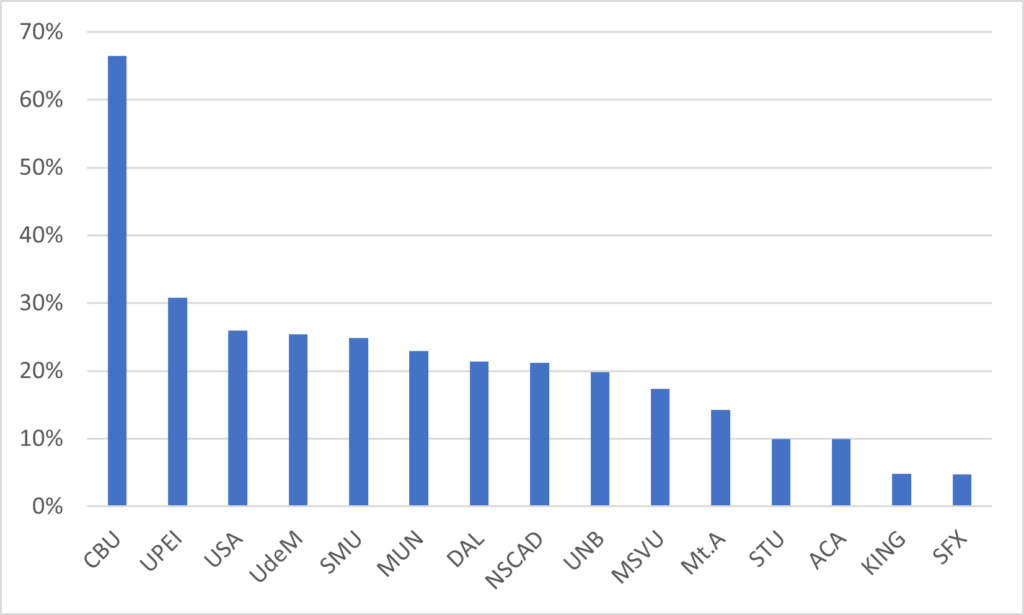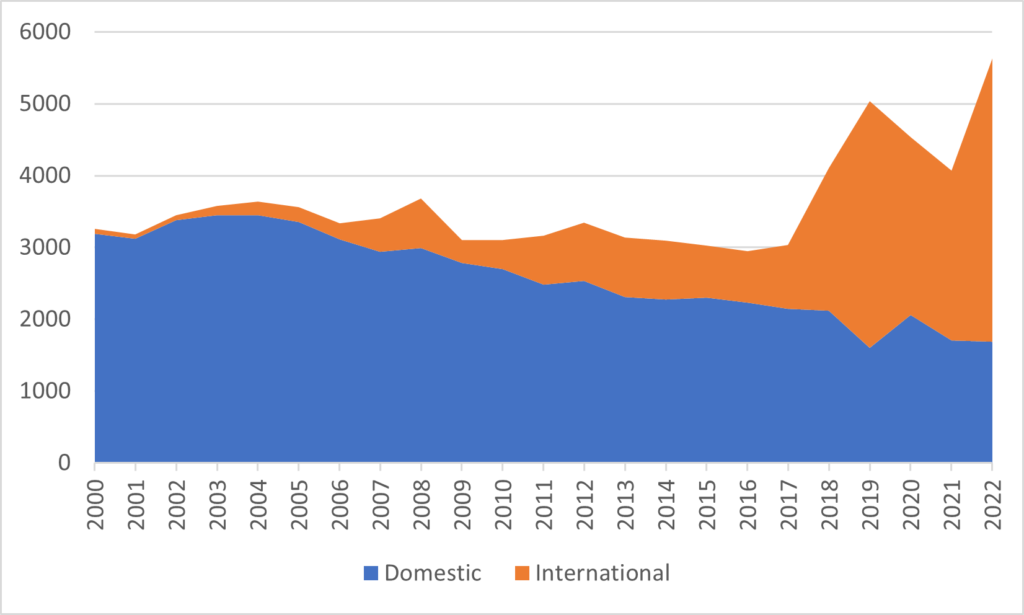Just a quick one today, because you all know how this story goes.
The Atlantic Association of Universities, bless them, produces enrolment data every October. Why it takes every other university in the country over a year to do the same is an utter mystery. But whatever the reason, it gives us the earliest window into what’s going on nationally in enrolments. Here’s the skinny:
Total enrolment is up 1%. But, predictably, it’s not evenly spread across student types. International students are up 15.5%, domestic ones down 2.6%.
Figure 1: Change in Enrolment, by Number and Source of Students, Atlantic Universities, 2021 to 2022

(This, by the way, is probably an undercount of international students because since 2009 AAU only reports full-time visa students. I doubt that misses many international students, but still worth noting).
I won’t bore you with a lot of institutional data other than to say: Nova Scotia still has three institutions with fewer than 1000 students (four, if you count the Atlantic School of Theology) and New Brunswick has two under 2500, and it isn’t getting any easier to run a small institution. I wouldn’t bank on all five of them still being here in the same form five years hence.
However, everyone has a survival strategy….international students! Full-time visa students now make up 23% of all students region-wide. One interesting fact you can see in figure 2 – if you can drag your eyeballs away from the Cape Breton number for a second -is that two of the biggest recruiters of international students in the region are Université Sainte-Anne and Université Moncton, which is a huge reversal from a few years ago when francophone institutions lagged anglophone ones (there’s another blog I will write about how international students are – unexpectedly – going to be the salvation of minority francophone institutions in Canada, but I’ll leave it for another day).
Figure 2: Atlantic Universities, by International Students’ Share of Population, Fall 2022

But yeah, I know, we need to talk about Cape Breton. Yes, really, full-time visa students make up two-thirds of the entire student body (and three-quarters of all full-time students). And isn’t figure 3 something? That’s a big jump in international students at CBU: up 1600 students after two years of COVID-induced decline. 1600 students translates to about $29 million in additional fees. On an existing budget of $89 million. Not much doubt about the incentives at play here.
Figure 3: Cape Breton University Enrolment, by Source of Students, 2000-2022

If all this makes you queasy, it should. If it makes you wonder what it means to be a public university in Canada, it should. It would be good if as a sector we could talk openly about it and what the alternatives are.
I’ll take a swing at this tomorrow.

 Tweet this post
Tweet this post
